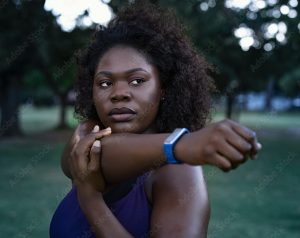Efunsetan Aniwura’s narrative is undoubtedly one of the most enthralling in Yoruba political history. It captures the role of women in Yoruba political history in a breathtaking way. But Efunsetan the strong woman narrative has been scripted and foreseen by her all along.
Efunsetan The Strong Woman.
The story of Efunsetan the strong woman is perhaps one of the most motivating stories in Yoruba history. It captivates, in the most outstanding manner, the place of women in Yoruba political history. But all along, the story of Efunsetan had been written and foretold by the people that torment her.
The tormentors are among those who have been depicted in a bleak light by mostly chauvinistic men.
It’s important to understand the context of Efunsetan’s worldwide popularity because the World was defined, at least at the time, as the circle within which local people acted inside a phenomenon.
The Birth of the Strong Woman.
Efunsetan Aniwura’s story is intriguing. Her exact year of birth is unknown, however, she must have been born in the 1790s or shortly thereafter. Efunsetan is depicted in Yoruba epic cinema and mythology as a nasty, prejudiced lady who died in terrible circumstances. However, those who authored his history continue to downplay the secret delights and heroic feats. Nothing is more perplexing than hearing the story of a great woman told by men in a society that is credited with not allowing women to participate in socio-political affairs, especially in the prehistoric era, when women were seen as objects consigned to the kitchen and the other room.
Brief History Of Ancient Yoruba Kingdom Before We Proceed With Efunsetan The Strong Woman Story.
In the huge Yoruba land of ancient, the 1700s to 1900 were periods of major warfare and armaments build-up. Across the Yoruba land, there were massive uprisings and societal upheavals. Yoruba authorities were seen mass-producing weaponry and importing military material from as far away as Hambourg, Germany.
My recent visit to the Ogedengbe of Ilesa was enthralled with Ogedengbe’s incredible accomplishments as the war General who led the Ekitiparapo war and who, by the 1860s, was importing military hardware from Europe to fight the battle.
Around 1880, it was said that the then King of England had summoned Ogedengbe for a state visit to demonstrate the Yoruba nation’s splendour. England admired Ogedengbe’s military techniques, leadership organisation, and Spartan lifestyle.
His mysticism and, above all, his science of battle, which he obtained partly from diligent observation of animal movement and behaviour during terrible brushes with death or combat with danger. At Okemesi, a bomb was created during this time period.
This changed the fortunes of warriors in Ogedengbe’s Ekitiparapo battle. Contrary to popular belief, the name Kiriji was derived from the sound of a new weapon developed in Okemesi, Ekiti. General Ogedengbe, who commanded a force of 100,000 men, had turned down a state visit to England, claiming that he was too preoccupied with state concerns. During my journey to Ilesa, I noticed a photograph of the then-King of England, which he had sent to Ogedengbe as a token of respect and honour.
The Strong Woman Quotes.
This strong woman has been represented as a villain who led a Gestapo of grief and blood, a bloodsucker who severed people’s heads on the spur of the moment. No. In our problematic past, we must deconstruct the myth that shrouded genuine facts beneath the guise of men’s dominance over the distinctiveness of certain heroic women. Efunsetan was the son of Ogunrin, an Egba farmer from Egba Oke-Ona. She ascended to become Ibadan’s Iyalode. She was the first woman to establish a thriving agrarian economy with over 2000 men and women working for her.

The Strong Woman Commanding an Infantry Army.
Concerned about the growth of conflict and warfare in Yoruba land, she provided infantry military training to her workers around 1850. She was believed to have had her own military training in urban and guerilla warfare, following which she demanded that her slaves, numbering in the thousands, receive the same instruction.
The majority of the employees were employed in large fields. Cash crops, cotton, groundnuts, maize, and beef were produced. She was reported to own a massive dairy farm capable of feeding the whole Yoruba nation and beyond.
She dealt with Ghana and the Hausa nation, as well as exported her goods to Europe. Prof Banji Akintoye writes about Efunsetan in her book A History of the Yoruba, describing her as a wealthy “woman merchant” with “more than 2000 employees worked on her plantations.”
Ancient Agriculture in Yoruba Land by the Strong Woman.
Agriculture had become the most industrious industry in Yorubaland, serving as one of the service points for European products, at a time when the industrial revolution was gaining traction in Europe, and agriculture had become the most industrious enterprise in Yorubaland.
Because all of the men and women in Ibadan were involved in large-scale farming, David Hinderer, a missionary who intended to build a church, was unable to get human labour.
The Yoruba Army’s Generals had also turned to the farm to avoid starvation as a direct result of the battle. In 1853, Hinderer travelled to Ibadan with a caravan of traders and transporters that numbered not less than 4000 individuals. “It is not improbable that Efunsetan was the richest individual in the entire Yoruba heartland in the late 1870s.”
The Strong Woman Misery.
Prof Akintoye stated. Efunsetan was also suffering from her own sorrows and misery.
After several years of marriage, she had no children. Unfortunately, her only child died in childbirth in 1860. Kumuyilo, her son, was also adopted. Now that she had lost her own child, she retired into seclusion and began to distrust life and living. She even became an agnostic, dismissing the gods’ questions about why she had to lose her only child.
She might have been driven to radicalism in some way. She ordered that none of her 2000 employees marries or have sex within the company and that none of the women procreates. It was discovered that one of the employees had broken the law. She gave the lady the death penalty.
Without a doubt, she carried out heinous orders of execution, yet this paled in comparison to her tremendous contributions to the Yoruba nation’s economy. The Aare ruled that she be brought to justice as a result of her actions. This was simply the classic hawk seeking any chance to claw lift the bird.
The Death of Efunsetan Aniwura.
Her assailants are thought to have just waited for her to commit a heinous deed in order to exact retribution for her perceived rise to prominence as a powerful woman.
Madam Tinubu of Lagos, who was also her friend, was their mutual competitor. It was a moment when her own army had become a menace to Latoosa’s raging army. How did a lady manage to raise such a large number of armed soldiers? Her death has been reported in two different ways. According to one account, Aare Latosa organised a large infantry force to lay siege to her home, but rather than being defeated, she killed herself by swallowing the Hemlock.
Due to the execution of some of the 2000 employees for conduct antagonistic to her power, her army was divided and allegiance was shattered at this time.
Another Version of Efunsetan the Strong Woman Death.
According to the second account, Latoosa paid Kumuyilo to poison her, but the attack was carried out at night by two of her slaves who slipped into her room via the roof and clubbed her. The Ibadan chiefs appeared to be dissatisfied with the manner in which Efunsetan was dragged to her knees. In reality, on the 8th of July, Latoosa convened a conference with Egba elders in Ibadan, asking for a Commission of Inquiry into the death of Efunsetan.
On the 10th of July 1874, the two slaves were taken before the Ibadan traditional court. They were impaled directly in the market of Basorun. Throughout Yoruba history, Efunsetan has been depicted in ominous images. It’s time to dismantle her and give her the respect she deserves as a heroine. Efunsetan’s property was recognised as Yoruba national property when he died. After her death, she was buried in Ibadan with full military honours.
Conclusion
The story of Efunsetan the strong woman is a culture-based story that talks about the rich cultural history of the Yoruba land and also about a distinguished woman of substance, a strong woman that controls an infantry army that the men of that time couldn’t afford.
Pictures in this article are not connected to madam Efunsetan Aniwura’s story, these are just random pictures for illustration of the story, please take note.
If you find this story appealing please feel free to drop your suggestion and comments in the comment section, I will love to hear what you think about Efunsetan the strong woman.


1 thought on “Efunsetan The Strong Woman In Ancient Yoruba Kingdom”